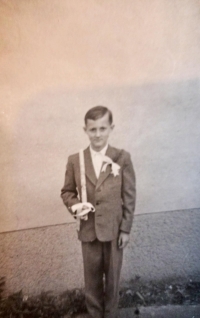I heard a deafening silence during the funeral of Jan Palach

Download image
Jan Klimeš was born on 9 September 1947 to a family of builders of communism Jan Klimeš and Miroslava Klimešová. The family settled in a house left behind by Germans in Mohelnice. The 1950s meant a happy childhood to him and he did not start to perceive the other side of communism until secondary industrial school. When he started studying Architecture in Brno in 1966, he was surprised by its low level and pro-regime education. August 1968 and the Soviet occupation brought a big disillusion to Jan Klimeš´s father. Jan Klimeš still considers the self-immolation of Jan Palach in 1969 the most formative and profound experience of his life. He attended his funeral and a year later organized a commemorative event on the anniversary of his death on Liberty Square in Brno. In 1977 he was the only one of eighty colleagues who did not sign the so-called Anticharter. His three children were born during Husák´s normalization and he adopted a Roma boy in the 1990s. The Velvet Revolution meant creative and personal freedom for him which he used during many important regional projects in his Green House Studio.
















